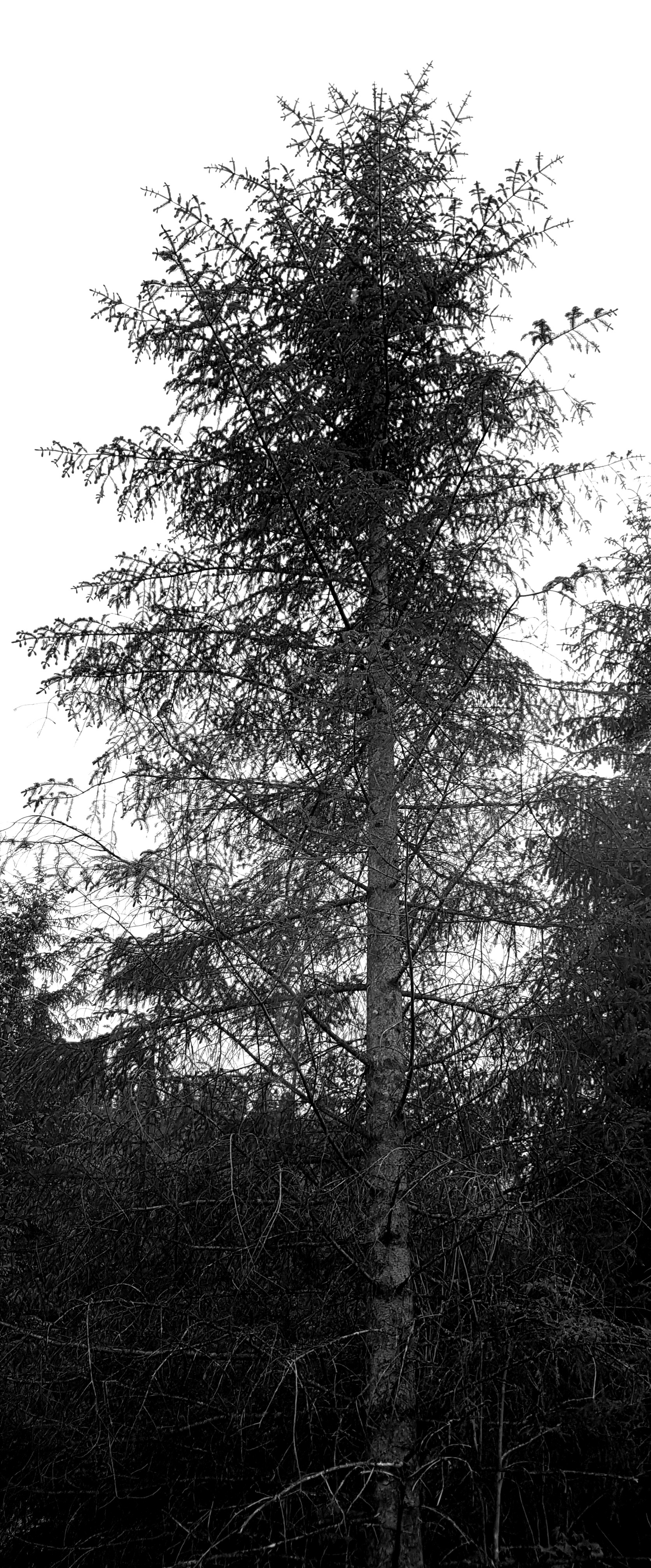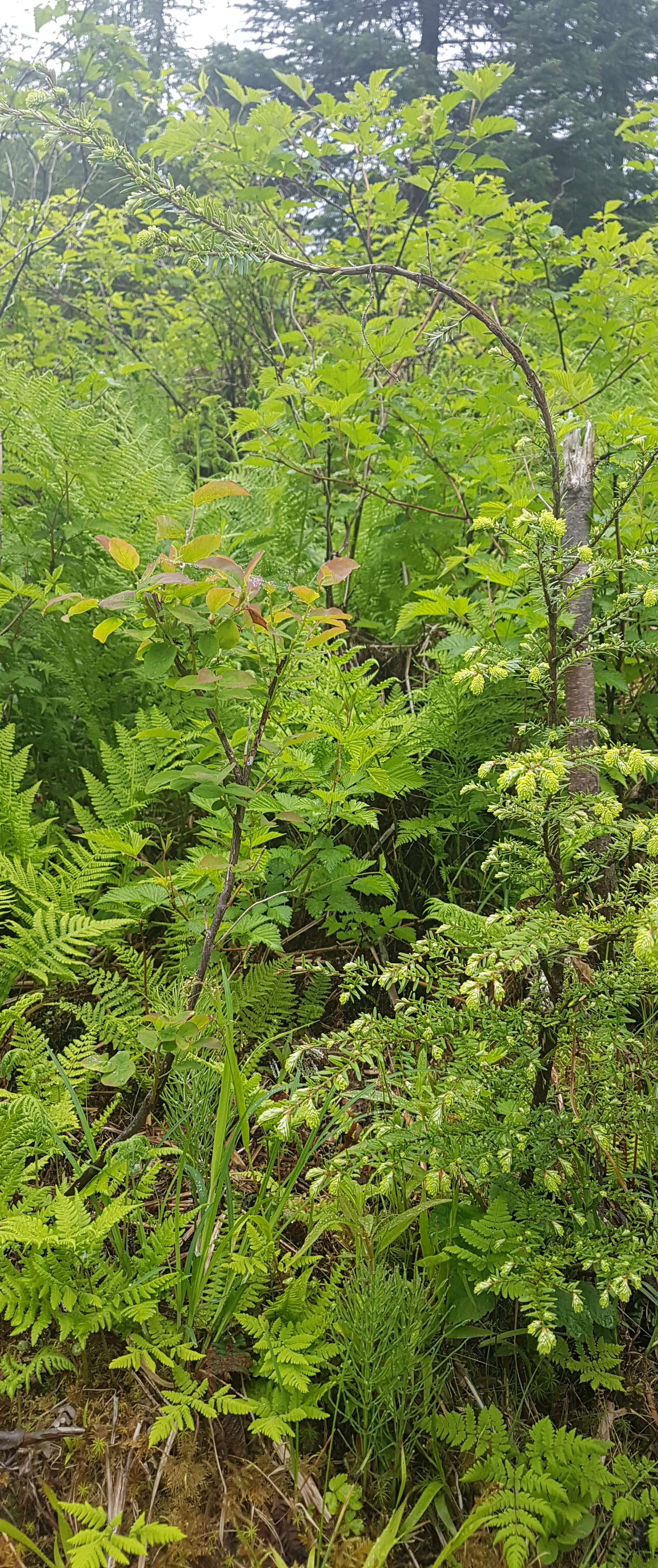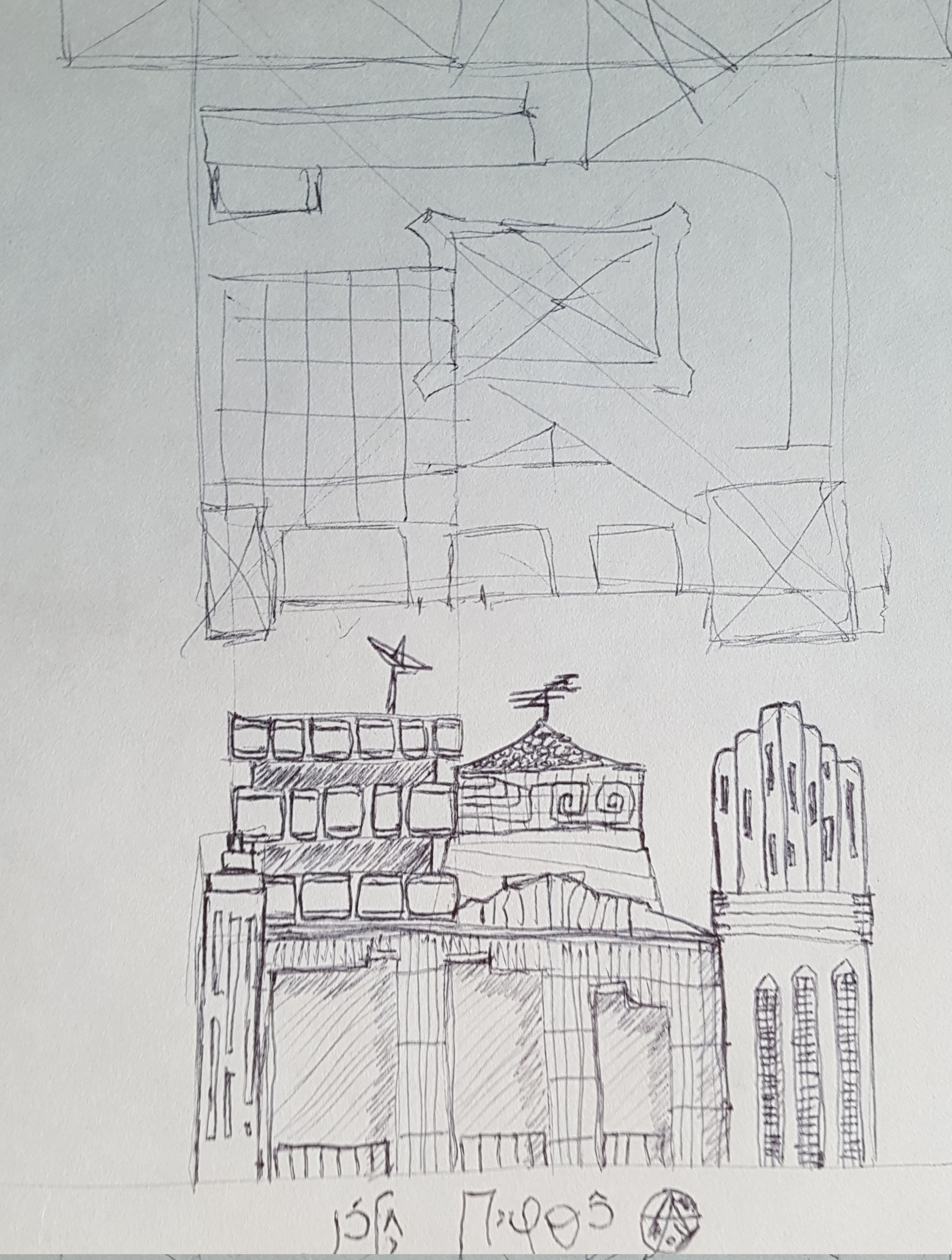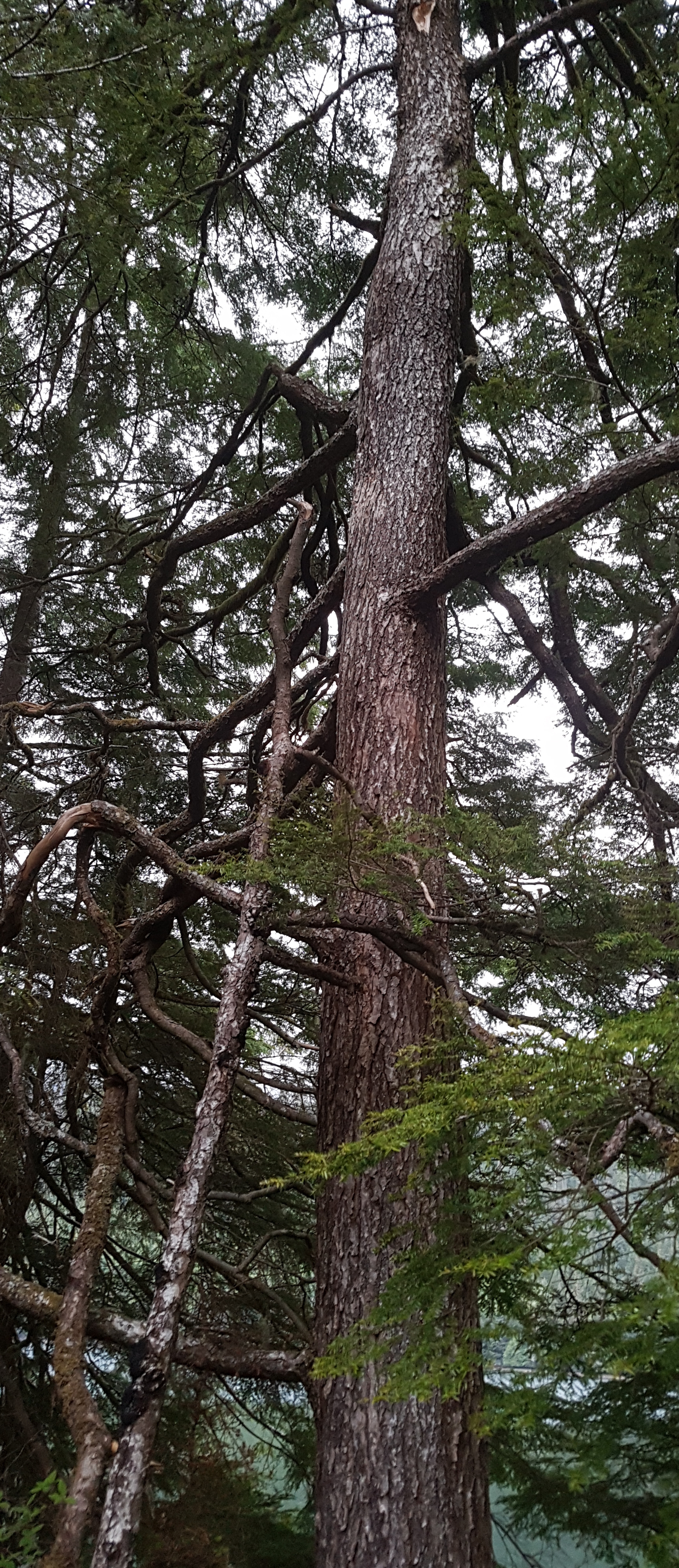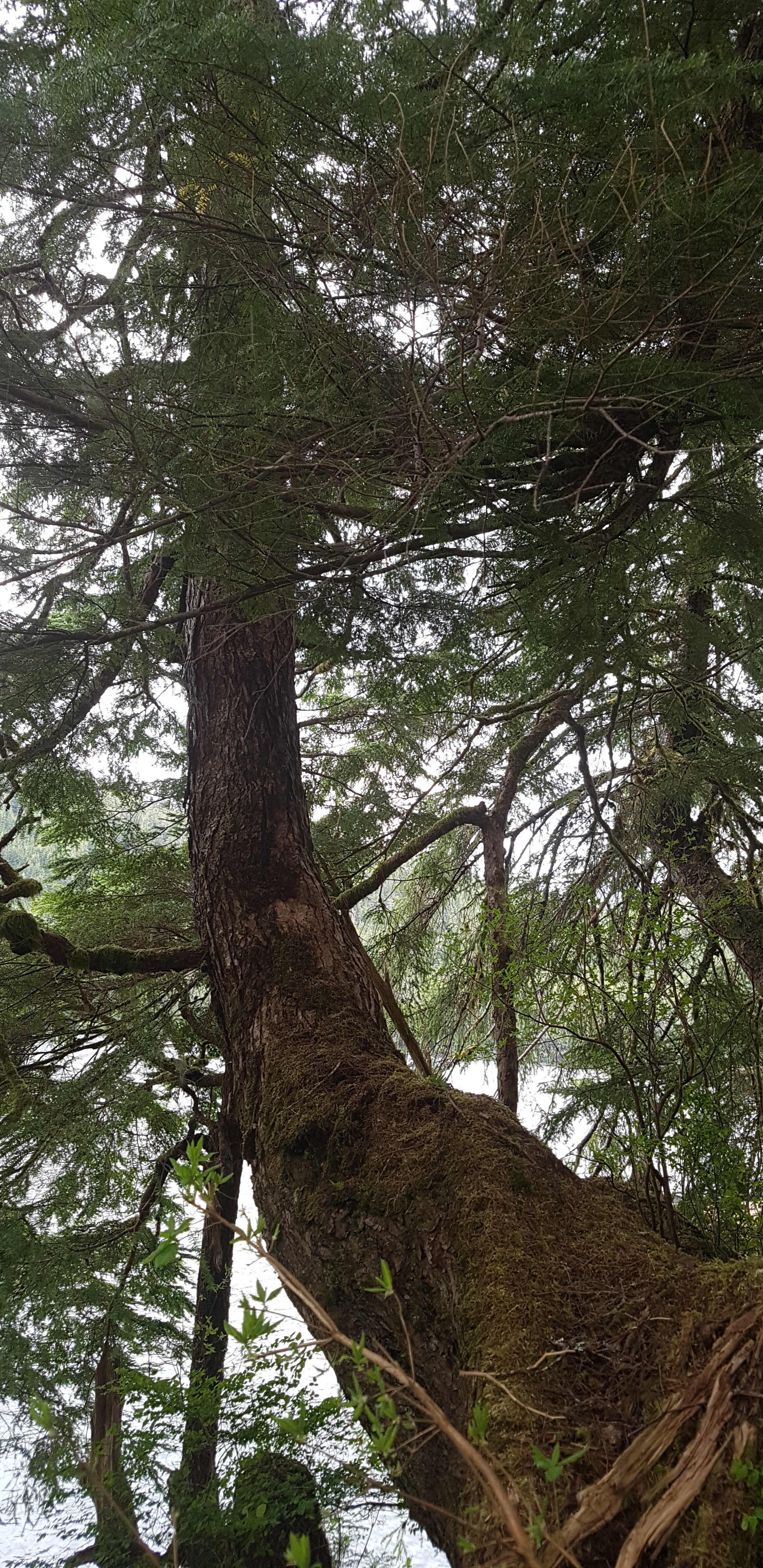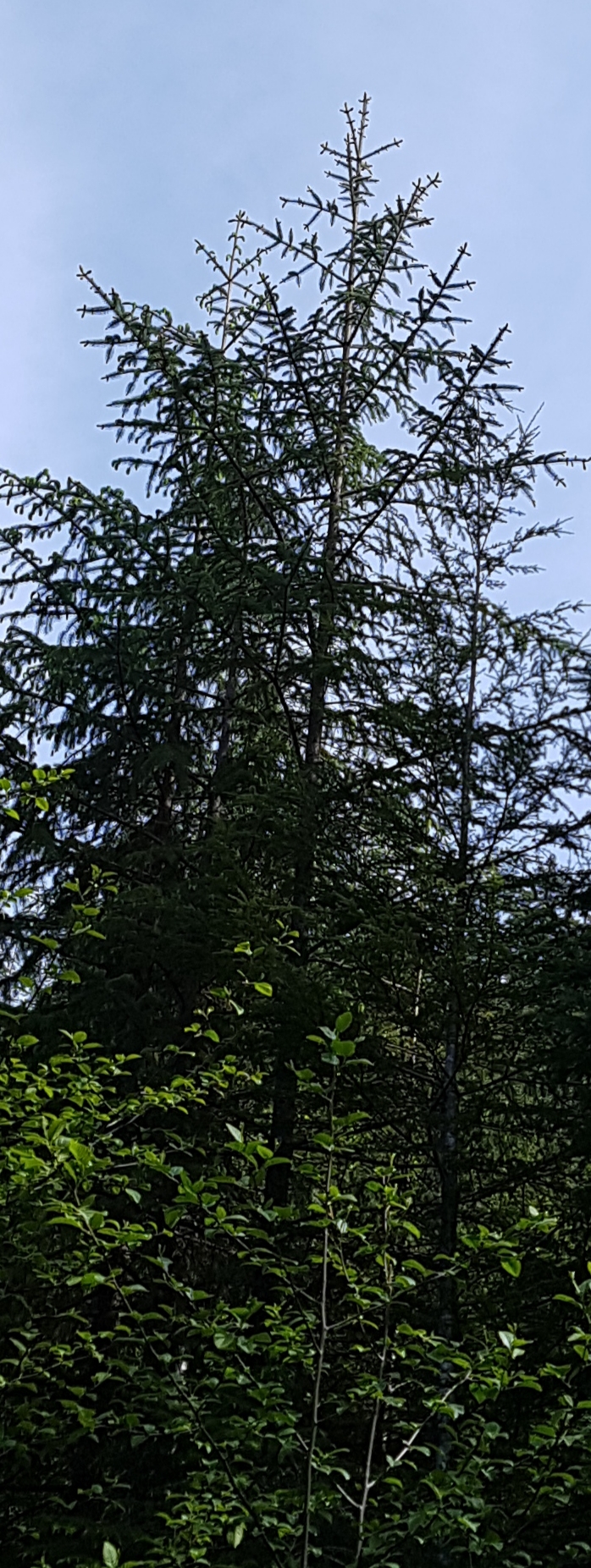Month: May 2020
Caveat: Art #35
I think this was an exercise in my art class at the University of Minnesota from 1988. It’s a little bit Chuck Closean.
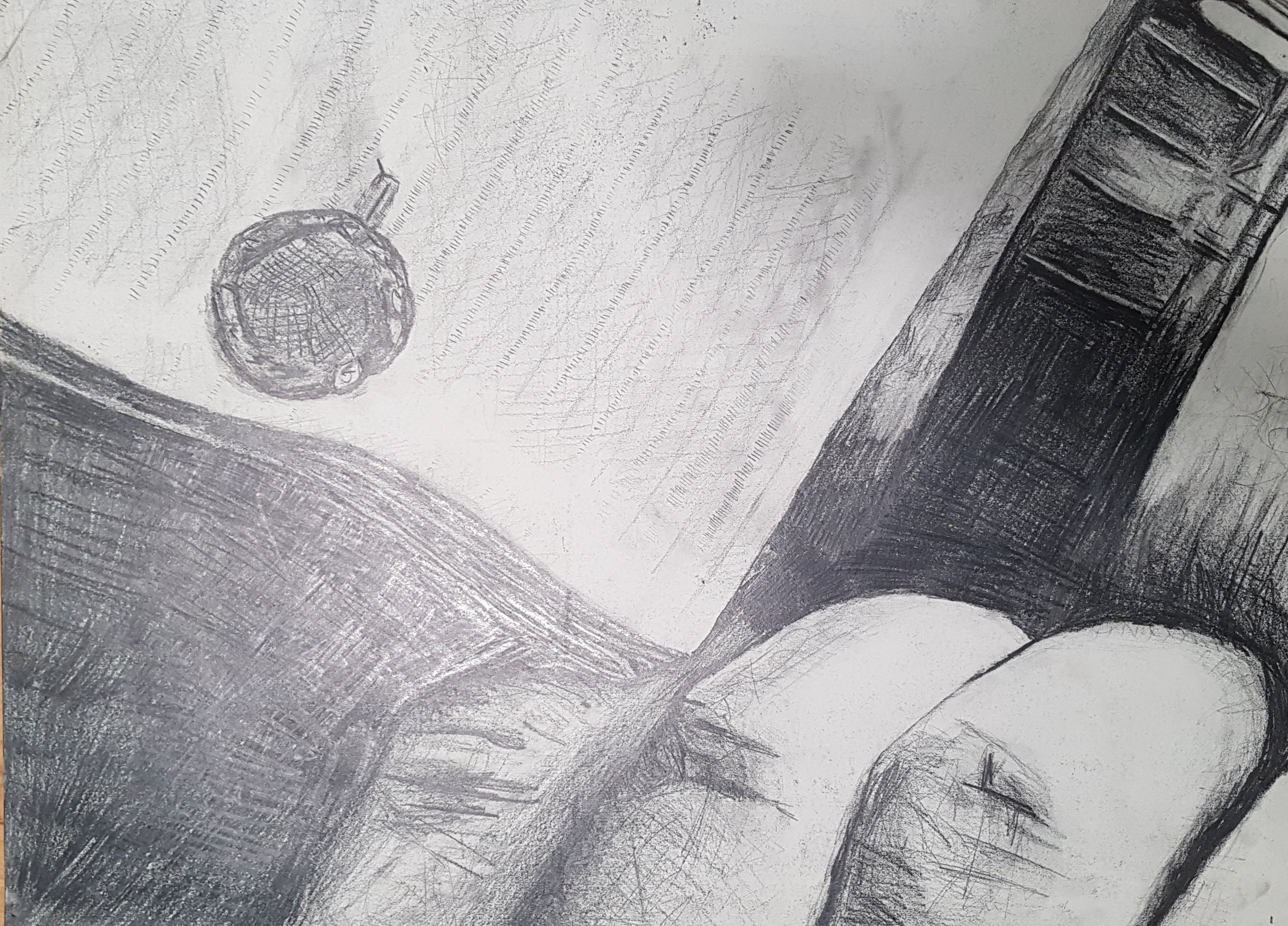
![]()
Caveat: Poem #1400 “An excursion in the boat”
ㅁ A fleet of otters Took possession of waters Just east of San Juan We saw some whales there In the small cove at Black Beach Diving and spouting An eagle was perched On a stone near an alder Supervising things Oceanic swells Crept up Ursua Channel Tasting all the boats Jellyfish sliced by Reflecting sporadic light Through the greenish murk Some white bellied ducks Swam in lazy formation Amid stray sparkles The surging sea rolled At San Ignacio's south Gnawing fine gray rocks The sun hid itself The clouds made intricate plans To send us their rain Another eagle Floated above the whitecaps Then knelt; caught a fish No fish saw our hooks Instead we dreamed about them The sea sang its depths
– a collection of pseudo-haiku forming stanzas in a longer poem.
![]()
Caveat: Tree #514
Caveat: Art #34
This is a giant chair that I saw in a dream in the mid 2010’s. It’s pretty minimalist, but I felt it represented something important at the time.
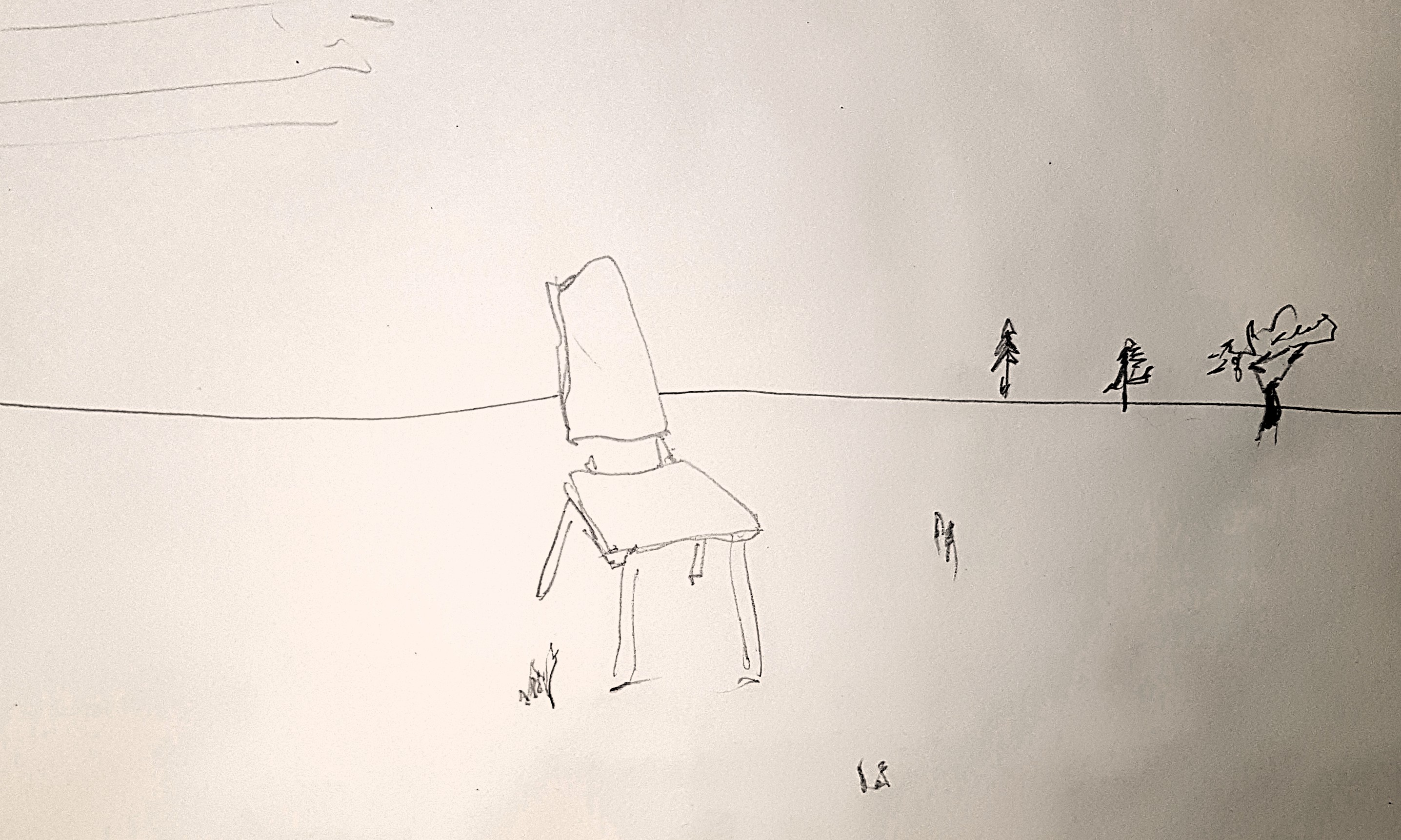
![]()
Caveat: Bleaugh
I’ve been a bit bleaugh, these last few days. I suppose that is evident reading between the lines of this blog thingy.
It’s a feeling of low creativity, and not much inclined to solve problems or progress on any of my projects.
Such as it goes. Arthur stuggles with his computer, daily. I have my own obsessions and struggles with my computer work, but they involve less cussing and yelling and violently slamming the table than he prefers, and more just moodily contemplating my stuckness. I’m a bit stuck with some configuration stuff on my servers. They’re working, but I’m seeing reliability issues I can’t figure out or solve. So I’m just plodding along.
![]()
Caveat: Poem #1399 “Snails”
ㅁ Snails have found radish leaves in my garden. They are so happy. Still, the radishes grow. The snails rush from leaf to leaf. The radishes seem unconcerned: new leaves appear daily to feed snails.
Caveat: Tree #513
Caveat: Art #33
This is yet another of that series of obsessions with implausible architecture from the late 1980’s.

![]()
Caveat: Poem #1398 “Against poetry”
Caveat: Tree #512
Caveat: Art #32
I think I published this on my blog before. It was from a dream I had, I think around 2011. I can’t find it on the blog. But here it is. A freaky dream.

![]()
Caveat: Poem #1397 “Guardian”
ㅁ I was told I was quite eccentric. This was in this dream I was in. My friend Bob was there, talking. He had an unreal farm. There were outbuildings. Within, some boats. A woman. She slept. Safe.
Caveat: Tree #511
Caveat: Art #31
This is something I drew around 1995. I messed around with crayons a lot – because that’s when Jeffrey had a lot of crayons around, and I would join him and Michelle in drawing sessions. This is just random daydreams and objects, but I like the “Mayan television” motif.

![]()
Caveat: Poem #1396 “The long view”
ㅁ Yes. It's true - what they say: I am a tree. Let's focus on that. I cling to the damp earth. The skies taunt me day and night. I'll get at them any year now. The days are like seconds spinning by.
Caveat: Tree #510
This is the tree that was in flames last August. I think, now, that it will not survive.

![]() [daily log: walking, 2km; boat-driving, 30nm]
[daily log: walking, 2km; boat-driving, 30nm]
Caveat: Gone fishin’
Art gazes out toward home, because no fish where hungry for hooks today. We got a few ugly red snappers – which is good whitefish but bony. But no halibut nor salmon. In the picture we were at the (not-so-) auspiciously-named Shipwreck Reef.
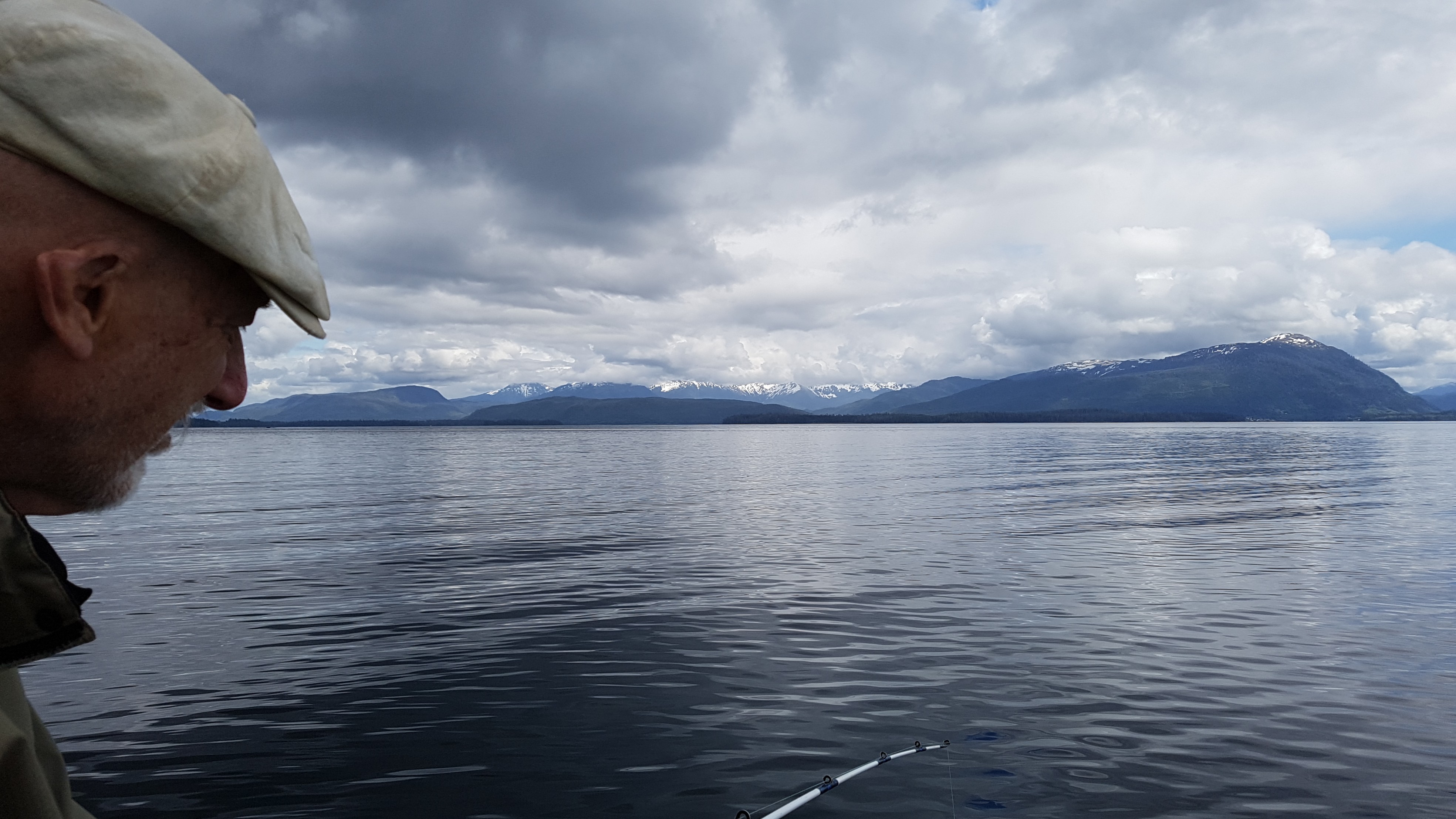
Earlier we’d been along the east side of San Juan Island and then down around Tranquil Point and Estrella Bay.
The clouds were nice.

![]()
Caveat: Art #30
Caveat: Poem #1395 “Scaling back expectations”
ㅁ So I sat to have breakfast, and I thought, "I might have sought to persist... sigh... exist."
Caveat: Tree #509
Caveat: Art #29
I did this ink drawing of the house I grew up in, in Arcata – typically known among family and friends as the “A Street House” – because it’s on A Street. That’s why, when someone asks, “What street did you grow up on?” I can say with a high degree of specificity that I grew up on a street.
The drawing is not from life, but rather from a photograph. Further, it’s a quite old photograph. My recollection is that the photograph was taken in the 1940’s or 1950’s, before my parents bought the house in 1965, and probably before their predecessors bought it too. The house was built in 1909 or 1911 (I can’t remember which) by a man named Cosmo Stiglich, one of the many Croatian-Americans to settle in East Arcata before WW2. My understanding is that the house stayed in the Stiglich family until the 1950’s, when the Hendrickson’s bought it, who later sold it to my parents.
Anyway, I guess that would be one of the Stiglichs’ little Model A Coupe in front of the house.
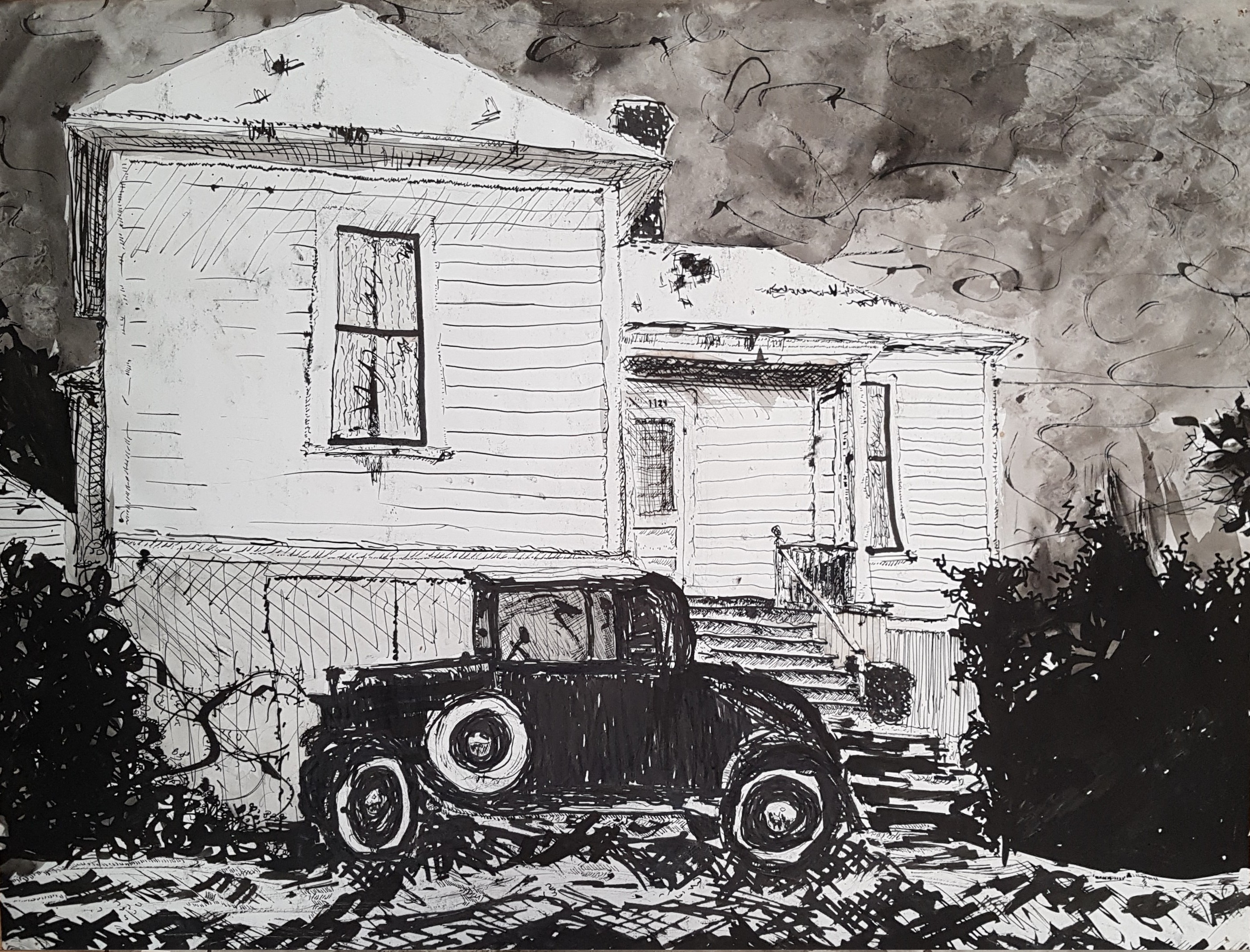
![]()
Caveat: its heart ticks perfectly unfretfully among the trees
Poem with No Children In It Instead, the poem is full of competent trees, sturdy and slow-growing. The trees live on a wide clean lawn full of adults. All night, the adults grow older without somersaulting or spinning. They grow old while thinking about themselves. They sleep well and stay out late, their nerves coiled neatly inside their grown bodies. They don’t think about children because children were never there to begin with. The children were not killed or stolen. This is absence, not loss. There is a world of difference: the distance between habitable worlds. It is the space that is unbearable. The poem is relieved not to have to live in it. Instead, its heart ticks perfectly unfretfully among the trees. The children who are not in the poem do not cast shadows or spells to make themselves appear. When they don’t walk through the poem, time does not bend around them. They are not black holes. There are already so many nots in this poem, it is already so negatively charged. The field around the poem is summoning children and shadows and singularities from a busy land full of breathing and mass. My non- children are pulling children away from their own warm worlds. They will arrive before I can stop them. When matter meets anti-matter, it annihilates into something new. Light. Sound. Waves and waves of something like water. The poem’s arms are so light they are falling upward from the body. Why are you crying? - Claire Wahmanholm (American poet)
This poem was published just yesterday, in the poem-a-day publication I receive via email. It affected me more than most.
The poet says she wrote the poem as a “thought experiment.” She asked, “Could I, just over the course of a poem, inhabit a parallel universe where I never had children?”
So why did this poem affect me? Because it struck me as the inverse of an exercise I’ve engaged in many times: can I inhabit a parallel universe where I did have children? I remember a very, very vivid dream I had, a week or two out of the ICU after my cancer surgery. I wrote about it here. The dream was brief but full of “back story” – within the dream. It was like living an entire, parallel life – a life in which in which I had children. I awoke heartbroken. This poem invoked in me a recollection of that dream and its psychological aftermath. I’d call it one of my “top ten” dreams of my entire life.
![]()
Caveat: Poem #1394 “No one is watching”
ㅁ The tree was leaping into the sea. It tangled its branches, flailing. The sea was indifferent. Eagles were witnesses. The tree's roots were caught. Moss rode its flanks. The clouds watched. Birds sang. Jump!
Caveat: Tree #508
Caveat: Art #28
This is a cartoony skeleton I drew, possibly in 2014 or so. But I have been drawing weird skeletons and skeletonish objects since high school, when I used to embed tiny skeletons in the neglected corners of drawings I did for my mechanical drawing classes at Arcata High School.

![]()
Caveat: Poem #1393 “Edges”
Caveat: Tree #507
I relocated this little 8″ tall pine tree from the muskeg at 7.4 mile to my lot 73. I like the pines, because they develop interesting shapes when they grow taller. It’s not clear to me that they are native trees or were brought here. Certainly they are much rarer than the “big 4” endemics: Western Hemlock, Cedar, Sitka Spruce, Alder. I’ve only found one growing on its own on Lot 73. I’ve relocated several here from the muskeg, though. We’ll see how they do.
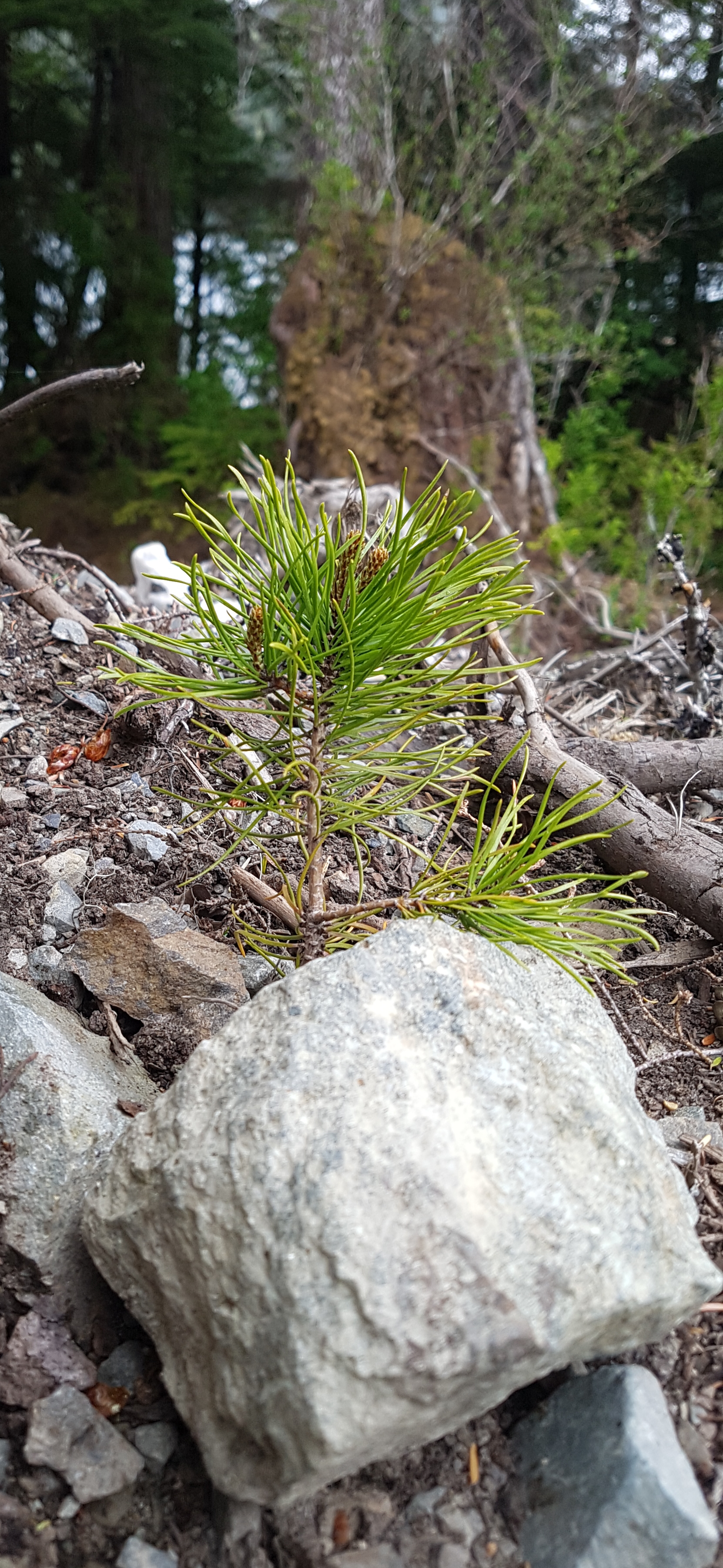
![]() [daily log: walking, 1.5km]
[daily log: walking, 1.5km]
Caveat: Art #27
This is a self portrait (from photograph) I attempted in 2012. I don’t feel it was particularly successful.
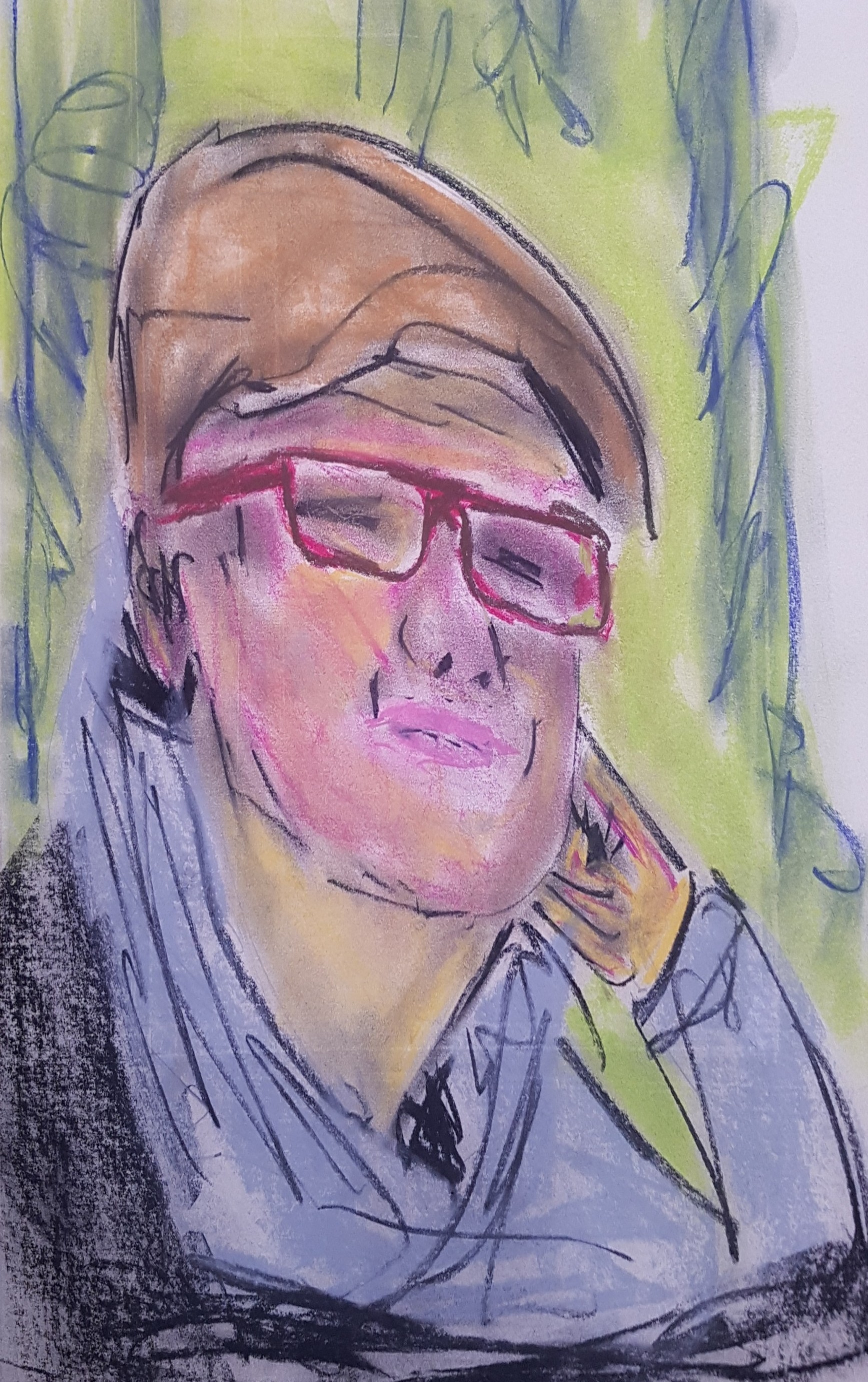
![]()
Caveat: 속다르고 겉다르다
Here is an aphorism from my book of Korean aphorisms.
속다르고 겉다르다
sok.da.reu.go geot.da.reu.da
inside-be-different-CONJ outside-be-different-PRES
The inside and outside are different.
This refers to a two-faced person, someone who is not who they seem or pretend to be.
![]()
Caveat: Poem #1392 “Bespoke geographies”
ㅁ Maps. Fictions. Diagrams. Imaginings. Strange realities. Bespoke geographies. Alternate universes. Linear agglomerations. Maybe just a way to pass some time.
Caveat: Tree #506
Caveat: imaginary map servers for rent
I have been pretty busy with computer stuff over the last few days.
That is because something new happened. For at least three years, now, I have imagined there might be a path to turning my eccentric computer-based geofiction hobby into some kind of business. Well, I officially have a first customer. I won’t say anything about that person – they may wish to preserve anonymity. But the concept is that they want their own, private “imaginary planet map server” in the style of the real world’s OpenStreetMap or Google Maps. These already exist. OpenGeofiction (“OGF”) is the most popular imaginary one, where I have been an active participant since early 2014. And in 2018 I began my own project, Arhet.
I like to call these “imaginary slippy maps” HRATE‘s: “High Resolution Alternatives to Earth.”
It has seemed to me there might be demand for these things. Geofiction isn’t exactly a popular hobby, but there are several hundred users at OpenGeofiction, and there are websites and communities dedicated to it, including the active reddit r/imaginarymaps. Further, if Hollywood is willing to pay linguists big bucks to create imaginary languages for their stories (e.g. Klingon from Star Trek, Dothraki from Game of Thrones), there might also be creators of large, mass-market fantasy or sci-fi who are also willing to pay money for professional-grade “slippy maps” of imaginary places. The current extant efforts at such things are depressingly amateurish, e.g. this map of Westeros.
 A few months ago, I had put out to the OGF community, in a very low-key way, that I would be willing to do the technical work and provide ongoing server hosting and administration to anyone willing to pay a minimum monthly amount on my Patreon account. Patreon is a website used by “creators” (musical performers, programmers, writers, visual artists, etc.) to provide a kind of “pay what you think it’s worth” tool for their fans and customers. On my Patreon account user page, I’d made explicit the concept, as you can see at this link (screenshot at right).
A few months ago, I had put out to the OGF community, in a very low-key way, that I would be willing to do the technical work and provide ongoing server hosting and administration to anyone willing to pay a minimum monthly amount on my Patreon account. Patreon is a website used by “creators” (musical performers, programmers, writers, visual artists, etc.) to provide a kind of “pay what you think it’s worth” tool for their fans and customers. On my Patreon account user page, I’d made explicit the concept, as you can see at this link (screenshot at right).
On Monday, someone reached out to me and said they were interested. So I promptly “spun up” a new geofiction server and gave them a log on username for it.
This is not trivial work, however.
I’m using the OpenStreetMap software platform – because it’s free and open source.
But it requires an Ubuntu Linux server (I rent my servers from a company called Linode, since they specialize in Linux servers). My servers live on server farms in California and New Jersey. They are not that expensive – the $20/month rate I set up on Patreon will cover the rental fee for a small server.
Building and running a Linux server from scratch is pretty involved, if it’s to be for a specialized application like a GIS map server (GIS means “Geographic Information Systems”).
I have to install databases (plural!), Apache (the webpage controller), the so-called Rails Port (the website software behind OpenStreetMap, OpenGeofiction, or Arhet), a rendering engine (part of the OpenStreetMap architecture but not integrated to Rails Port). Several of these pieces need customized bits of programming code changes to accommodate a function not in their original design – i.e. hosting an imaginary, non-Earth planet map. Several aspects of the OpenStreetMap platform “hard code” real-world facts and data – because the designers simply never imagined the idea that someone would be using the platform to present non-real-world data. I have to remove code references and datafiles related to Earth’s coastlines, for example, and develop alternate ways to extract that information from the planet database and generate those same datafiles in the correct format. Etc., etc.
Anyway, I’ve got my customer’s planet up and running, including a nicely mapped chain of islands, that the customer asked me to import from their work on OGF. I’m feeling pleased with this. If I get 2 more such customers, I’ll be making enough margin (over and above server rental costs) to support my other tech requirements, such as hosting this here blog. I will not link to this new server I just built, however, since they deserve to have a say in how I publicize their work.
I doubt very much this would ever be a way to make an actual living. But it’s nice to imagine that this hobby could be turned into a supplemental source of income. So maybe it wouldn’t be a “living,” but it would be sufficient to pay for the geofiction hobby and for several other internet-based hobbies that involve money, like this blog. For now, I bought some beer. We shall see.
Meanwhile, as I often say on the OpenGeofiction site: happy mapping.
![]()



